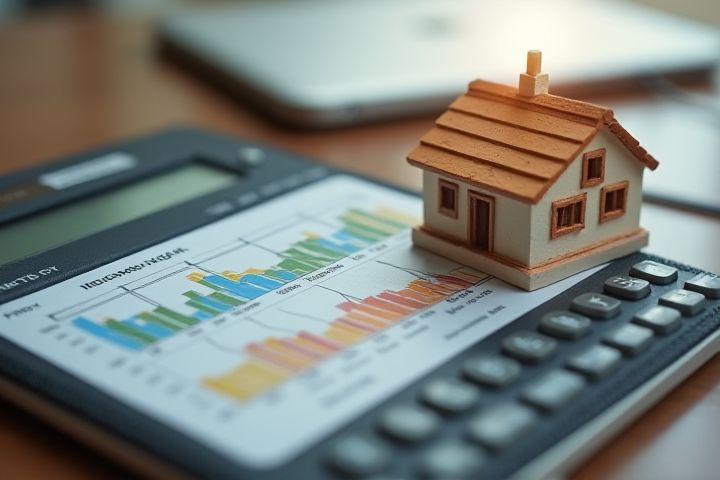
To reduce your house energy bills, start by improving insulation in attics and walls to minimize heat loss. Sealing gaps around windows and doors also helps create a more energy-efficient home. Installing energy-efficient appliances, such as ENERGY STAR-rated refrigerators and washing machines, can significantly decrease electricity consumption. You can also consider using smart thermostats to optimize heating and cooling schedules based on your daily routine. Finally, switching to LED lighting can lower energy use, as these bulbs consume up to 75% less energy than traditional incandescent bulbs.
How To Reduce House Energy Bills
Switch to LED lighting
Switching to LED lighting can significantly lower your energy bills, as LEDs use up to 80% less energy than traditional incandescent bulbs. With an average lifespan of 25,000 hours, LED bulbs outlast their counterparts, reducing replacement costs and waste. By replacing just five standard bulbs with LEDs, you might save approximately $100 per year on your electricity bill. Consider upgrading to LED fixtures throughout your home for maximum efficiency and long-term savings.
Use programmable thermostats
Using programmable thermostats can reduce your home energy bills by up to 10% annually. These devices allow you to set specific schedules for heating and cooling, adjusting temperatures according to your routine. For example, you can program them to lower the temperature by 5-10 degrees when you're away from home or sleeping, ensuring energy isn't wasted. Investing in a programmable thermostat can typically pay for itself within a year through savings on your energy costs.
Seal windows and doors
Sealing windows and doors can significantly reduce your home's energy bills by preventing drafts and heat loss. Employ weatherstripping or caulking around frames to create an airtight barrier, ensuring that warm air stays inside during the winter and cool air remains during summer. Inspect for gaps and cracks regularly, as even small openings can lead to substantial energy wastage over time. Investing in high-quality materials for sealing will improve your home's energy efficiency and provide long-term savings on utilities.
Insulate walls and attics
Insulating walls and attics is a highly effective way to reduce your house energy bills by minimizing heat loss or gain. Proper insulation can save homeowners between 10% to 50% on heating and cooling costs, depending on the climate and existing insulation levels. For optimal results, use high R-value insulation materials, such as spray foam or rigid foam boards, which provide superior resistance to heat flow. Consider sealing air leaks around windows, doors, and ducts to enhance the effectiveness of your insulation, ensuring that your home remains energy-efficient year-round.
Install energy-efficient appliances
Installing energy-efficient appliances can significantly lower your household energy bills. By upgrading to models with the ENERGY STAR label, you can reduce energy consumption by 10% to 50%, depending on the appliance type. For instance, energy-efficient refrigerators can use 15% less energy than standard models, saving you approximately $200 over its lifespan. Investing in these appliances not only decreases your utility costs but also contributes to a more sustainable environment.
Utilize solar panels
Utilizing solar panels can significantly lower your energy bills by harnessing renewable sunlight; they can reduce your electricity costs by up to 75%. Investing in solar technology may require an initial expenditure of approximately $10,000 to $30,000, but federal and state incentives can offset a significant portion of this cost. Typically, solar panels can pay for themselves within 5 to 10 years, depending on your location and energy consumption. Moreover, by switching to solar energy, you can contribute to environmental sustainability while potentially increasing your property value by 4% to 5%.
Implement smart home devices
Implementing smart home devices can significantly reduce your energy bills by optimizing energy consumption. For instance, smart thermostats can automatically adjust heating and cooling based on your schedule, potentially saving you up to 30% on heating and cooling costs. Smart lighting systems can be programmed to turn off when rooms are unoccupied, which can contribute to a reduction of about 20% in lighting expenses. Using smart power strips can help manage energy use by cutting power to devices that enter standby mode, leading to an estimated savings of 10% on your overall electrical bill.
Regular HVAC maintenance
Regular HVAC maintenance can significantly reduce your house energy bills, often by up to 30%. This includes changing filters every 1-3 months, which enhances system efficiency and air quality. Annual professional inspections ensure that your heating and cooling systems operate at peak performance, addressing issues before they escalate into costly repairs. Implementing these routine checks not only extends the lifespan of your HVAC system but also contributes to a more comfortable living environment.
Limit water heater temperature
Setting your water heater temperature to a maximum of 120 degrees Fahrenheit can significantly reduce energy consumption and lower your house energy bills. Each 10-degree reduction in temperature can decrease your water heating costs by about 3-5%. Insulating your water heater and the first few feet of hot water pipes also helps retain heat, preventing unnecessary energy use. This simple adjustment not only promotes safety, reducing the risk of scalding, but also contributes to a more energy-efficient home environment.
Unplug unused electronics
Unplugging unused electronics can lead to significant savings on your monthly energy bills, with estimates suggesting up to 10% of your total electricity usage may come from phantom loads. When devices remain plugged in but not in use, they can still draw power, which often goes unnoticed until it's reflected on your bill. By simply disconnecting chargers, televisions, and other gadgets when they are not being used, you can lower your energy consumption significantly. Implementing this habit not only enhances your home's energy efficiency but also contributes to environmental sustainability by reducing overall energy demand.
